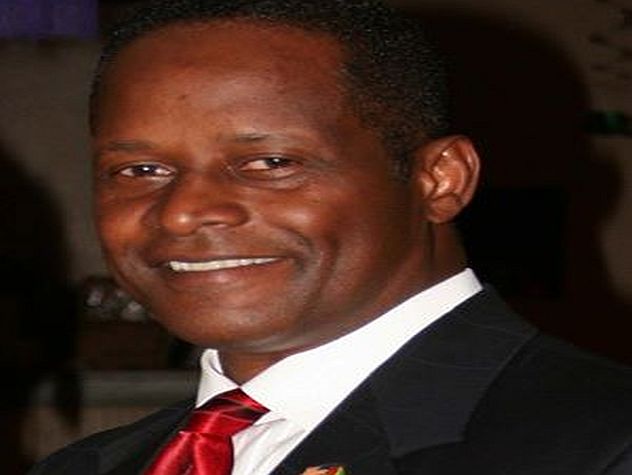By Wayne Forde
Guyana is due to begin receiving substantial oil revenues. Why should we invest in protecting the electrical grid?
Shooters attacked a Pacific Gas and Electric (PG&E) substation in Metcalf, California, on April 16, 2013, causing 15 million dollars in damage in 19 minutes. The gunmen fired more than 100 rounds into the radiators of 17 electric transformers. The attack that almost disrupted power to parts of Silicon Valley. It was referred to as “The most significant incident of domestic terrorism involving the grid that has ever occurred” by the US top utility regulator. After seven years, the offense remains unsolved.
Is the power grid in Guyana vulnerable to similar attacks? What infrastructure protections exist in the energy sector?
Guyana is now highly visible and recognized on the world stage on account of the petroleum that has started flowing from the vast offshore reservoirs. However, this visibility brings with it a more significant threat to critical infrastructure by enemies of the state- known and unknown, and in particular Guyana’s neighbor to the West-Venezuela.
Threats to the country and infrastructure are now, more than ever, a possibility that must be considered. These threats include industrial espionage, terrorism, information warfare, insiders, and natural disasters.
As the Guyana Power and Light (GPL) adds new dual-fuel generation sets at the cost of US $41 million to utilize natural gas from the local oil sector, there remain vulnerabilities in the electrical grid because of the inherent weakness in the system. The vulnerability in the Guyana power grid exists within four power plants that produce a low output of 106.7 megawatts with the Demerara and Berbice interconnected system (DBIS). This physical system remains highly vulnerable to attacks.
Security experts assert that “threats exist because the system exists.”
National security
Guyana has several vulnerability points, including hundreds of miles of porous borders that increase the threat level significantly. The current grid architecture of overhead high –voltage (69 kV) lines and poorly defended substations present soft targets for any persons intending to cause extensive disruptions. Other than the physical network, a vulnerability exists at the logical and physical control levels. These assets are soft targets for cyber-criminals and those who would like to create havoc, including insiders. Authorized internal and external sources and outside actors attempting unauthorized access pose significant risks to the grid.
Why should Guyana invest in protecting critical infrastructure in the electrical power grid and upgrade a deteriorating infrastructure?
Energy security
Energy security is vital for the economic growth and sustained development of any country. Energy is critical for national security, prosperity, economic development, and its effectiveness. Guyana ranks poorly in getting electricity for entrepreneurs and businesses (World Bank, 2019). These deficiencies have impeded sustained economic and social development. Protecting critical infrastructure assets is just as essential as increasing their effectiveness and reach. The disruption, infiltration, incapacitation, destruction, or misuse of infrastructure assets would have a debilitating impact on the economic security of businesses and citizens. Critical infrastructure, such as the electrical grid, directly supports the safety, security, and economic well-being of the Guyanese people, and in particular, the private sector.
Private sector
Recently, in referring to oil revenues, minister Jordan said, it could “change us once and for all into a Singapore kind of country.” Ironically, Singapore did not depend on oil revenues to become a first-world country; it is a resource-scarce country that reformed and developed a thriving private sector that contributed significantly to prosperity.
There is a strong correlation between private sector growth and energy reliability. Private sector growth, small and medium-sized business success, and sustainability in Guyana depend on cheap, clean, and reliable energy. Guyana’s electrical grid is aging and becoming increasingly vulnerable to decay, natural degradation factors, and inherent weaknesses. The implementation of energy resource-saving technologies and enhancement of energy efficiency and protection are vital for Guyana’s economic growth and prosperity.
Role of the new administration-future
Unlike the US, where the private sector owns 85 percent of the critical infrastructure, the government of Guyana owns most of the infrastructure. The new administration in Guyana should invest revenues from the oil and gas sector to perform a systematic examination of networks to determine the adequacy of security measures and invest heavily in critical infrastructure protection across the power grid and all other critical infrastructure assets.
Future infrastructure projects and protection should also include public-private-partnerships. Smart-Grid technology should replace the existing system, and power distribution should be underground. Early threat and detection warning system, incident reporting, and response process should be developed.
Cyber-physical systems are a “smart grid” technology, where networked computers and communications technology would be used to work autonomously to resolve problems in the electric grid, manage consumer electronic usage during peak and off-peak times, and administer energy production.
There are no financial constraints to essential development and risk mitigation to the electrical grid with the flow of petro-dollars.





